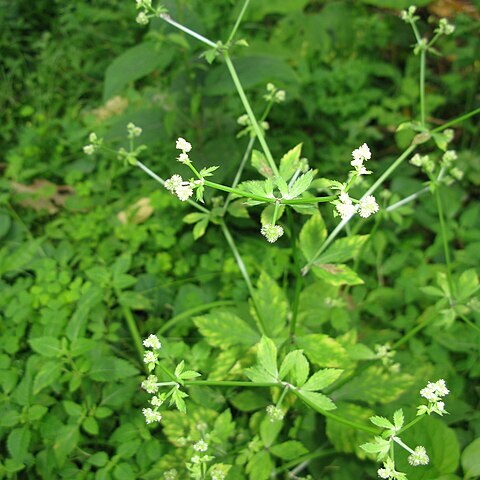Plants up to 1 m high. Stem erect, branched above. Basal leaves few; petioles 7–30 cm, sheaths scarious; blade suborbicular or round-reniform, 3–5-parted, abaxially pale green, irregularly doubly serrate, teeth mucronate; central segment obovate, 3–10 × 4–13 cm, base cuneate; lateral segments divided to near base. Cauline leaves reduced upward, subsessile; blade 3-parted. Inflorescence usually trichotomously branched, terminal branch short, the lateral branches elongate; bracts foliaceous, 3-lobed; bracteoles 8–10, linear, 1.5–2 × ca. 1 mm; umbellules 6–10-flowered. Staminate flowers 3–7 per umbellule; pedicels 1–1.5 mm; petals white, obovate. Fertile flowers 3 or 4 per umbellule, sessile, slightly longer than the staminate; calyx teeth linear, ca. 1.2 × 0.5 mm; style nearly equaling calyx teeth. Fruit ovoid-globose, 4–5 × 3–4 mm, calyx teeth rostrate, persistent, bristles uncinate above, dilated at base; vittae 5, moderate, commissural vittae 2, larger. Fl. and fr. Apr–Oct.
More
A herb. It keeps growing from year to year. It grows 30-100 cm high. The leaves are kidney shaped or heart shaped. They are divided into finger like segments. These are 3-10 cm long by 4-13 cm wide. The side segments have deep lobes. They are oblique and have teeth. The flowers are small and white or greenish-yellow. They are in groups. The fruit have prickles that are hooked.
The young plants gathered before flowering are dipped in hot water, washed, seasoned and used as a vegetable. They are also pickled with salt for later use.

